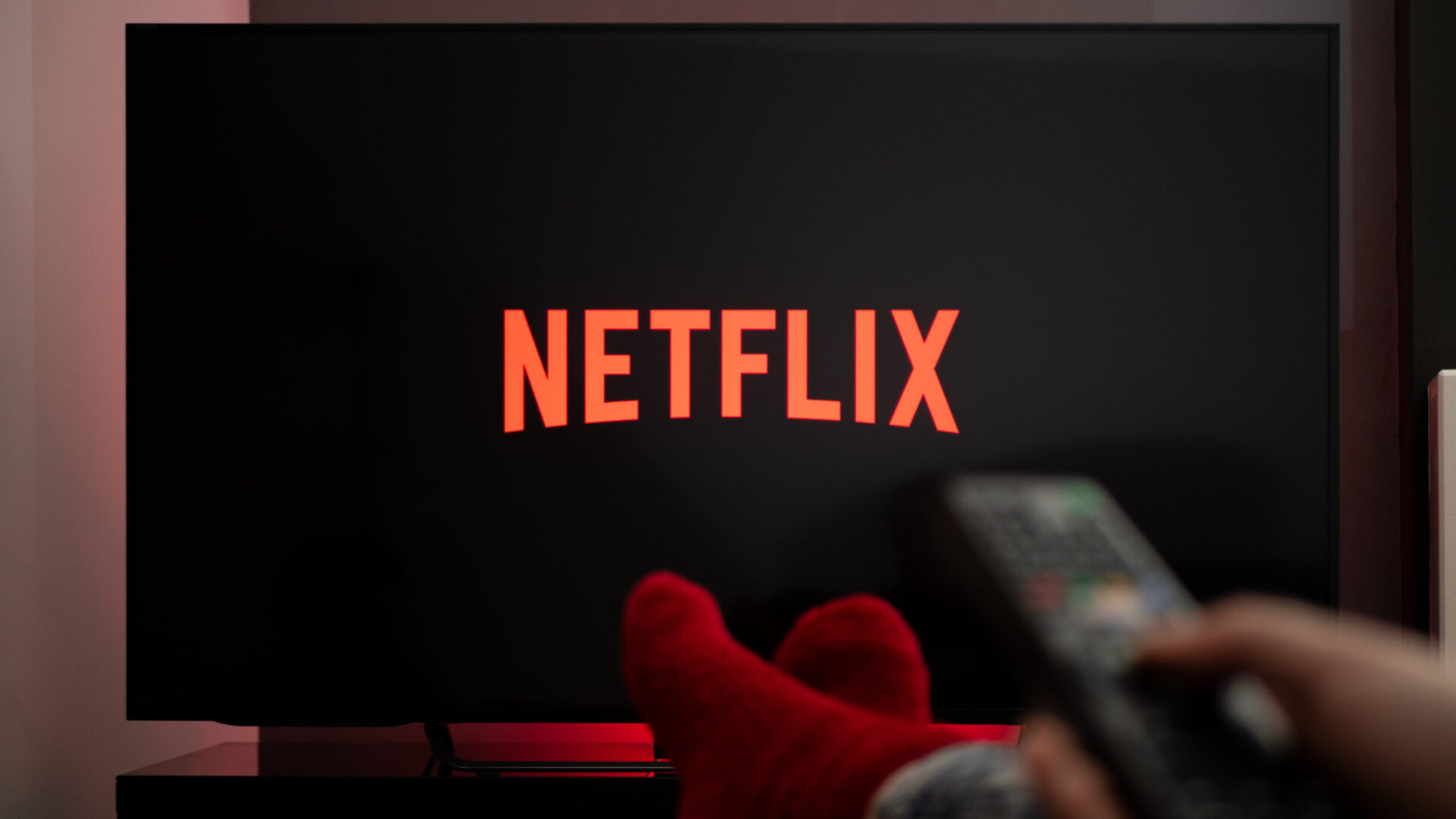Netflix is an American subscription streaming service that offers a wide variety of TV shows, movies, anime, documentaries, and more on thousands of internet-connected devices. Netflix members can watch as much as they want, anytime, anywhere, without ads or commitments.
Netflix was founded in 1997 by Reed Hastings and Marc Randolph. The company started as a DVD-by-mail service, but it quickly transitioned to streaming video in 2007. Today, Netflix is the world’s leading streaming service, with over 222 million subscribers in over 190 countries.
Netflix offers a wide variety of content, including original programming, licensed TV shows and movies, and documentaries. The company also has a number of exclusive partnerships with major studios, such as Disney, Warner Bros., and Universal.
Netflix is available on a variety of devices, including smart TVs, streaming media players, game consoles, and mobile devices. The company also offers a web-based interface for watching content on computers.
Netflix is a popular streaming service for a number of reasons. The company offers a wide variety of content, it’s available on a variety of devices, and it’s affordable. Netflix is also constantly adding new content, so there’s always something new to watch.
If you’re looking for a streaming service with a wide variety of content, Netflix is a great option. The company offers a free trial, so you can try it out before you commit to a subscription.
Here are some of the benefits of using Netflix:
- A wide variety of content: Netflix offers a wide variety of TV shows, movies, anime, documentaries, and more. There’s something for everyone on Netflix.
- Available on a variety of devices: Netflix is available on a variety of devices, including smart TVs, streaming media players, game consoles, and mobile devices. This means you can watch Netflix on your TV, computer, or mobile device.
- Affordable: Netflix is an affordable streaming service. There are a variety of subscription plans to choose from, so you can find one that fits your budget.
- Constantly adding new content: Netflix is constantly adding new content, so there’s always something new to watch. This means you’ll never get bored with Netflix.
If you’re looking for a streaming service with a wide variety of content, affordable prices, and constantly adding new content, Netflix is a great option.
Founding History of Netflix
Netflix was founded in 1997 by Reed Hastings and Marc Randolph. The idea for the company was born after Hastings was charged a late fee for a rental of Apollo 13 at Blockbuster Video, which sparked his interest in creating a subscription-based DVD-by-mail service that would not impose late fees.

Reed Hastings and Marc Randolph, the co-founders of Netflix, originally met in the late 1990s when Hastings was the CEO of a software company called Pure Software and Randolph was a successful entrepreneur and marketing expert. The two had previously worked together on a different startup, and after Hastings was charged a $40 late fee by Blockbuster Video, they began discussing the idea for a subscription-based DVD rental service.
In 1997, Hastings and Randolph founded Netflix in Scotts Valley, California. They initially called the company Kibble, but eventually settled on the name Netflix, which was intended to convey the idea of a “flick” of a movie being delivered over the internet.
The early days of Netflix were challenging, as the company struggled to raise capital and establish relationships with movie studios and distributors. However, Hastings and Randolph were persistent and eventually secured a partnership with the DVD distributor Ingram Entertainment, which allowed them to offer a larger selection of titles and expand their customer base.
By the early 2000s, Netflix had become a profitable and rapidly growing company, with over 100,000 subscribers and a selection of more than 4,000 DVD titles. The company went public in 2002, and its IPO was one of the most successful in the tech industry at the time.
In 2007, Netflix launched its streaming service, which initially consisted of a library of 1,000 titles. The company’s early streaming efforts were met with skepticism by many in the industry, who believed that the technology was not yet ready for widespread adoption. However, Netflix continued to invest in streaming and eventually became a leader in the field, with a library of tens of thousands of titles and a growing selection of original content.
Today, Today, Netflix is one of the most popular streaming services in the world, with over 200 million subscribers in more than 190 countries. The company has continued to innovate and expand its offerings, including the introduction of 4K Ultra HD streaming and the expansion of its original content library. Netflix has a market capitalization of over $200 billion and a presence in virtually every country in the world. The company has continued to innovate and expand its offerings, including the introduction of interactive content and the development of new technologies like virtual reality.
Revenue Streams of Netflix – How does Netflix make money?
Netflix generates revenue from several sources, including subscriptions, licensing agreements, and original content production.
Subscription revenue: Netflix’s primary revenue stream is from its subscription-based model. Customers pay a monthly fee to access the company’s library of movies, TV shows, and other content. Netflix offers a range of subscription plans, with different price points and features depending on the level of access customers desire. As of 2021, Netflix has over 200 million subscribers worldwide, generating over $25 billion in revenue.
Licensing revenue: In addition to its subscription-based revenue, Netflix also generates revenue through licensing agreements with content owners. Netflix pays fees to studios and distributors to license their movies and TV shows for its platform. These agreements typically involve a set fee for a certain number of years, with the option to renew or extend the agreement. Licensing agreements allow Netflix to offer a wide range of content without the upfront costs of producing original programming.
Original content revenue: In recent years, Netflix has increased its investment in original content production. The company’s original content includes TV shows, movies, and documentaries that are produced exclusively for the Netflix platform. Netflix invests heavily in developing and producing original content, and has built a reputation for high-quality programming. The revenue generated from original content comes from subscription fees, as well as potential licensing fees if the content is sold to other platforms or networks.
Merchandise and licensing deals: Netflix has also begun to explore revenue streams beyond its core business of streaming content. The company has started to develop merchandise based on its original programming, such as t-shirts, mugs, and other branded products. Netflix has also entered into licensing agreements with other companies to develop products and experiences based on its content, such as theme park attractions or video games.
Overall, Netflix’s revenue streams are primarily based on its subscription-based model, with additional revenue generated through licensing agreements and original content production. As the company continues to grow and expand, it may explore new revenue streams and business models to further monetize its content and brand.
Why is Netflix so popular ?
Disruptive business model: When Netflix was founded in 1997, the DVD rental industry was dominated by Blockbuster, which operated a brick-and-mortar rental business model with late fees. Netflix disrupted this model by offering a subscription-based DVD-by-mail service with no late fees, which proved popular with consumers. This innovative business model allowed Netflix to quickly gain market share and expand its customer base.
Strategic partnerships: In the early days of Netflix, the company faced challenges in securing relationships with movie studios and distributors. However, Netflix’s founders, Reed Hastings and Marc Randolph, were persistent in building partnerships and eventually secured a deal with the DVD distributor Ingram Entertainment. This partnership allowed Netflix to offer a larger selection of titles and expand its customer base, leading to the company’s rapid growth and success.
Investment in technology: As streaming technology began to emerge in the mid-2000s, Netflix recognized the potential of this technology and began investing heavily in developing its streaming platform. The company developed its own content delivery network, which allowed for faster and more reliable streaming. This investment in technology helped Netflix to establish itself as a leader in the streaming industry and attract new subscribers.
Focus on original content: In recent years, Netflix has made a major push into producing its own original content. The company’s investment in original programming has helped to attract new subscribers and retain existing ones. Netflix has produced critically acclaimed and award-winning shows like Stranger Things, The Crown, and Narcos, which have helped to establish the company as a major player in the entertainment industry.
Global expansion: In addition to its success in the US, Netflix has also made a major push into international markets. The company has expanded its offerings to over 190 countries and has invested in producing local language content in many of these markets. This global expansion has helped to fuel the company’s growth and establish Netflix as a truly global brand.
Overall, Netflix’s success can be attributed to a combination of innovative business model, strategic partnerships, investment in technology, focus on original content, and global expansion. The company’s ability to adapt to changing market conditions and consumer preferences has helped it to become one of the most powerful players in the entertainment industry.
Is it all positive? – Growth Stagnation of Netflix
Netflix has been experiencing growth stagnation for the past few years. In 2022, the company lost subscribers for the first time in a decade. There are a number of factors that have contributed to this stagnation, including:
Increased competition
The streaming market is becoming increasingly crowded, with new competitors entering the market all the time. This has made it more difficult for Netflix to attract new subscribers and retain existing ones. Some of Netflix’s biggest competitors include:
- Disney+
- HBO Max
- Hulu
- Amazon Prime Video
- Paramount+
- Apple TV+
These competitors are all investing heavily in new content, which makes it more difficult for Netflix to stand out. They are also offering lower prices and more features, which makes them more attractive to consumers.
Rising prices
Netflix has been raising its prices in recent years. This has made the service less affordable for some people, and it has led to some subscribers cancelling their subscriptions. In 2022, Netflix raised its prices in the United States by 10%. This was the company’s largest price increase in years.
Account sharing
Netflix has long turned a blind eye to account sharing, but it is now cracking down on the practice. This could lead to some subscribers cancelling their subscriptions if they are no longer able to share their accounts with others. Netflix estimates that around 100 million households are sharing accounts.
Saturation of the US market
The US market, where Netflix has traditionally been strongest, has become increasingly saturated, with a high percentage of households already subscribing to Netflix. This makes it more difficult for the company to continue growing in this market, as there are fewer potential customers to reach.
Content fatigue
Some people are starting to feel like they have seen everything that Netflix has to offer. This could lead to some subscribers cancelling their subscriptions in search of new content. Netflix has been criticized for its lack of new hit shows in recent years.
Netflix is taking steps to address these challenges, but it remains to be seen whether they will be enough to reverse the company’s growth stagnation. The company is investing heavily in new content, expanding into new markets, cracking down on account sharing, and introducing new features. It remains to be seen whether these steps will be enough to reverse Netflix’s growth stagnation. However, the company is taking the right steps to address the challenges that it is facing.
Growth Strategy of Netflix
Netflix has been a pioneer in the streaming industry, and its growth strategy has evolved over the years. Here are some of the key elements of Netflix’s growth strategy:
Investment in original content: Netflix has continued to invest heavily in producing its own original content as a key growth strategy. The company plans to spend approximately $17 billion on original content in 2021, which is up from $11 billion in 2020. By producing a wide range of high-quality original content across various genres, Netflix aims to attract new subscribers and retain existing ones.
Expansion into international markets: While Netflix has already expanded into many international markets, the company continues to focus on growth in these regions. In particular, the company is targeting growth in Asia, which is seen as a key growth opportunity. To achieve this, Netflix is investing in producing more local language content in these markets and developing partnerships with local media companies.
Innovation in technology: Netflix is constantly innovating in technology to improve the user experience and attract new subscribers. The company has been experimenting with new features, such as the “Shuffle Play” button, which randomly selects content for users to watch, and the “Downloads for You” feature, which automatically downloads recommended content to a user’s device.
Expansion into gaming: In July 2021, Netflix announced that it was expanding into the gaming market. The company plans to offer mobile games to subscribers at no additional cost, starting with simple games based on Netflix’s original content. This move into gaming is seen as a way for Netflix to attract new subscribers and increase engagement among existing ones.
Diversification of revenue streams: In addition to its core streaming business, Netflix is also diversifying its revenue streams. For example, the company has begun selling consumer products, such as clothing and merchandise based on its original content. Additionally, Netflix is exploring new business models, such as a potential expansion into live events or a move into podcasting.
Overall, Netflix’s latest growth strategy is focused on investment in original content, expansion into international markets, innovation in technology, expansion into gaming, and diversification of revenue streams. As the streaming market continues to evolve, Netflix is seeking to adapt and differentiate itself from its competitors to continue growing its subscriber base and revenue.
Competitors of Netflix
Here are some of the regional competitors of Netflix in detail:
Europe
a. Sky (UK, Italy, Germany, Austria): Sky is a leading broadcaster in the UK, Italy, Germany, and Austria that offers a range of TV channels, movies, and sports content. Sky’s streaming service, Now TV, allows users to stream content on-demand or watch live TV. The platform also offers a range of features, such as downloads and parental controls.
b. Canal+ (France): Canal+ is a leading broadcaster in France that offers a range of TV channels, movies, and sports content. Canal+ also has a streaming service, CanalPlay, which allows users to stream content on-demand or watch live TV. The platform offers a range of features, such as downloads and personalized recommendations.
Latin America
a. Claro Video (Mexico, Brazil, Colombia): Claro Video is a leading streaming platform in Mexico, Brazil, and Colombia that offers a range of movies and TV shows, including exclusive content that is not available on other platforms. The platform also offers live TV channels and a range of add-ons that users can purchase to customize their streaming experience.
b. HBO Go (Mexico, Brazil, Argentina): HBO Go is a streaming service owned by HBO that offers a range of movies and TV shows in Mexico, Brazil, and Argentina. The platform is also home to a range of original content, including popular shows such as Game of Thrones and The Sopranos.
Asia-Pacific
a. HOOQ (Southeast Asia): HOOQ is a popular streaming platform in Southeast Asia, offering a range of movies and TV shows, including exclusive content that is not available on other platforms. The platform also offers a variety of features, such as live streaming and user-generated content.
b. iFlix (Southeast Asia): Iflix is a popular streaming platform in Southeast Asia, offering a range of movies and TV shows, including exclusive content that is not available on other platforms. The platform also offers a variety of features, such as live streaming and user-generated content.
Middle East
a. OSN (Middle East): OSN is a leading broadcaster in the Middle East that offers a range of TV channels, movies, and sports content. OSN’s streaming service, OSN Play, allows users to stream content on-demand or watch live TV. The platform also offers a range of features, such as downloads and parental controls.
b. Shahid (Middle East): Shahid is a popular streaming platform in the Middle East, offering a range of movies and TV shows, including exclusive content that is not available on other platforms. The platform also offers live TV channels and a range of add-ons that users can purchase to customize their streaming experience.
Overall, Netflix faces regional competitors in various markets that have established strong footholds in their respective regions. These competitors often offer localized content and features that are tailored to the specific needs and preferences of users in their markets. Netflix will need to continue to differentiate itself with high-quality original content, a compelling user experience, and innovative technology to attract and retain subscribers in these markets.
Also Read: Netflix – Creating A Winning Brand Strategy
To read more content like this, subscribe to our newsletter



